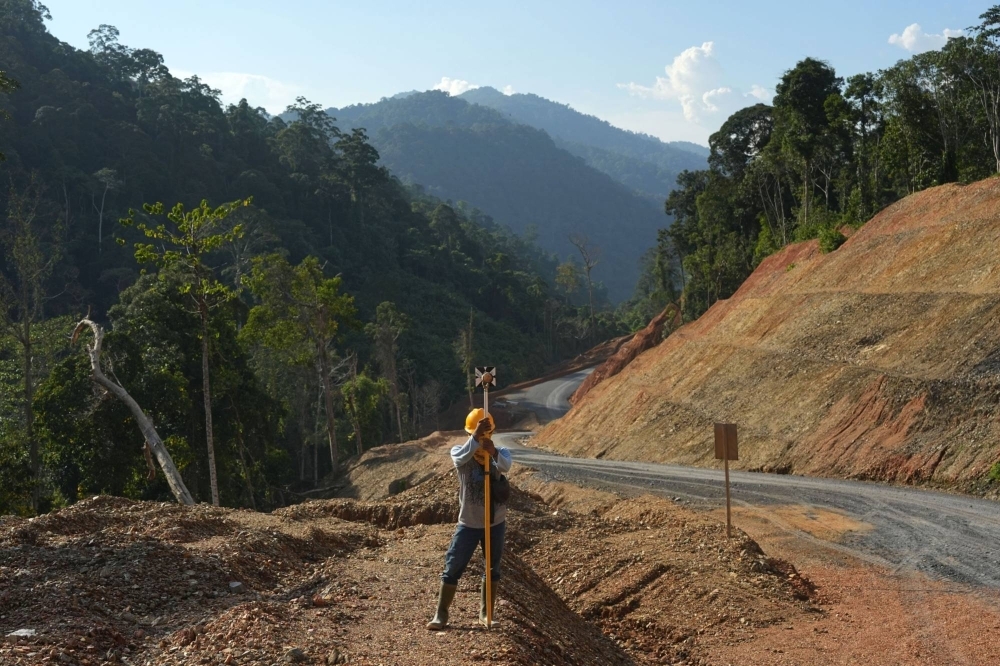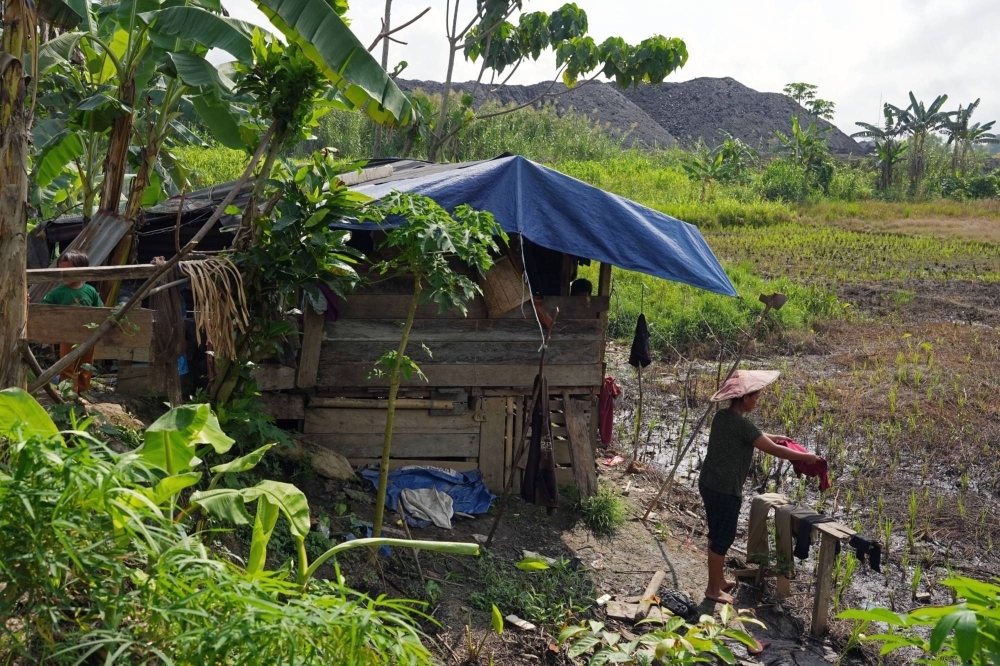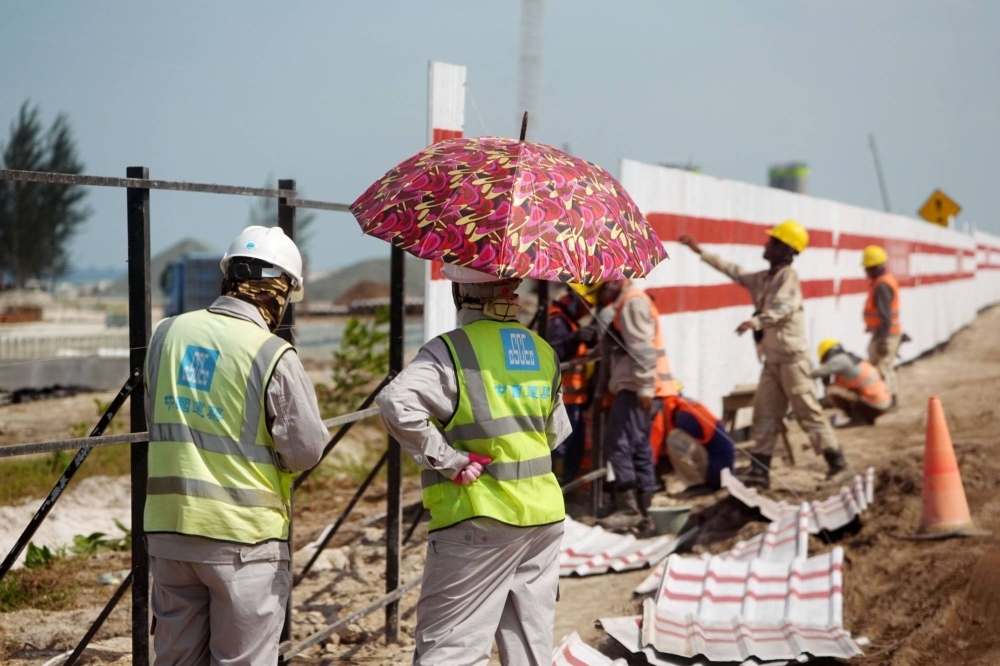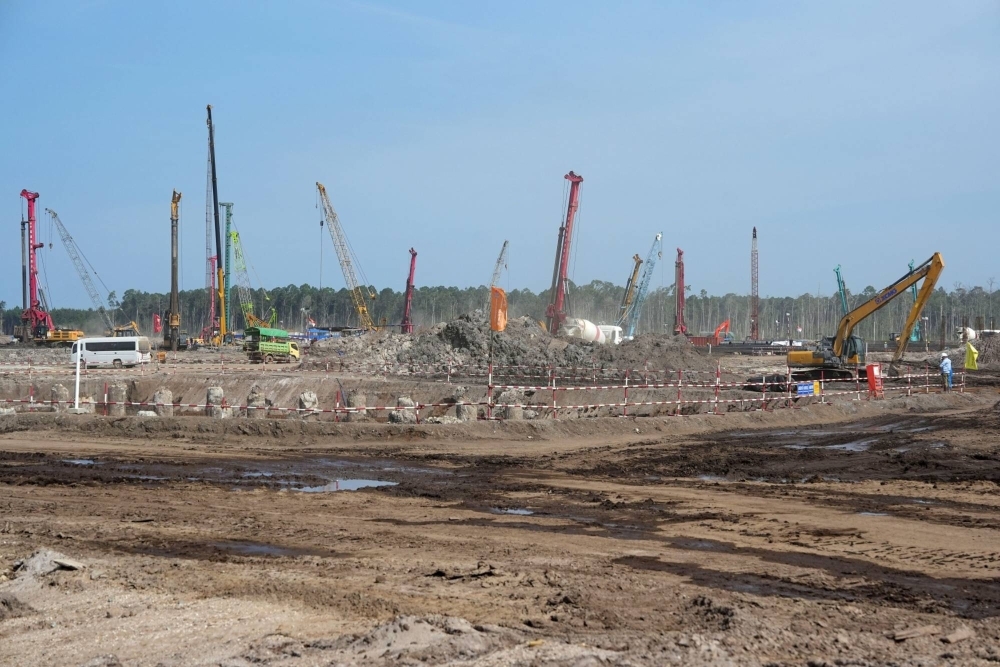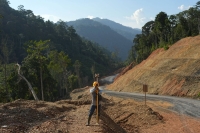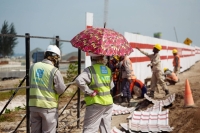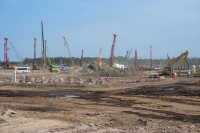In a heavily forested district in Indonesia’s portion of the island of Borneo, excavators and an army of surveyors are clearing the way for a $2.6 billion hydroelectric plant, purpose-built to power a vast industrial park — a project lauded by its backers and Jakarta’s government as evidence that economic growth can come with limited carbon cost.
But the reality to support that low-emission ambition lies years in the future.
As dark seams emerge from beneath the surface, the machines churning the rainforest and red Kalimantan soil lay bare the near-term alternative. For much of this decade, Kalimantan Industrial Park Indonesia — like well over 100 other large, energy-hungry industrial estates across the country — will in fact run on coal.
Parks like this one are the backbone of President Joko Widodo’s development policy, an effort that seeks to spread economic growth across the archipelago and to leverage Indonesia’s mineral wealth to move up the value chain, into metal processing and electric vehicles. KIPI, as the $132 billion site is known, is promoted as a transformative project and one of the country’s greenest — eventually. Today, it’s a potent reminder of the difficult choices confronting emerging economies, facing a climate emergency but also an economic one.
Phasing out fossil fuels is once again likely to be a target for negotiators at a United Nations climate summit that begins next week. But while coal-exporting nations like Indonesia and South Africa can in theory agree with the rich world on the need to eventually move away from the black stuff, practice is harder when it comes to the most energy-hungry corners of the economy. Heavy industry still leans overwhelmingly on coal, as high battery storage costs, policy hurdles and the need for speed leave clean options lagging — especially in the eyes of investors targeting primarily the Chinese and domestic market.
At KIPI, a 1.06-gigawatt coal-fired plant will power the $2 billion Adaro Minerals Indonesia aluminum smelter due to begin operating in 2025, years before hydropower — itself not without environmental and social costs — and solar energy are able to take on the burden, sometime in the next decade. There is little economic incentive not to pick the fastest option. Even a decree passed last year to promote renewable energy and stop new coal power makes an exception for off-grid plants at "national strategic” projects, allowing them to operate until mid-century.
Indonesia’s hefty bet on metal processing has brought billions of investment dollars and tangible growth in export value. Nickel in particular has surged as Chinese firms pile in, seeing opportunity in ore processing. But this all requires affordable, accessible, round-the-clock power. In the absence of adequate power grids, cost-effective renewable energy and battery storage — never mind a green premium for clean meals — that’s led to a boom in so-called captive coal or off-grid coal power for industrial use.
It’s now an intractable problem at the heart of the green transition.
Indonesia today has eight times more operating captive coal capacity than it did roughly a decade ago, about the time when Jokowi, as the president is popularly known, came to power. These off-grid plants account for a fifth of the country’s coal capacity, according to a recent report published by the University of Maryland’s Center for Global Sustainability — and over half of proposed additions.
That includes KIPI.
"The challenges we are facing are representative of those faced by other countries,” said Dharma Djojonegoro, chief executive of Adaro Power, whose parent company, coal giant Adaro Energy Indonesia, is among the companies in the KIPI consortium. The Adaro Group, through affiliates, also has a 50% stake in the company developing the hydropower plant.
"We want to industrialize, but we also want to go renewable. The trouble is that right now, the technology and competitiveness is not there for renewables, except for hydropower.”
Jakarta is not blind to the trouble with fossil fuels, or to the opportunities that come with transition. Jokowi and U.S. President Joe Biden agreed last year to what is now a $21.5 billion Just Energy Transition Partnership deal to help wean Southeast Asia’s largest economy off coal, aiming for peak power sector emissions in 2030, net-zero emissions for the sector by mid-century and renewable energy at 44% of total generation by the start of the next decade.
Those are stretch targets. Even including hydropower and geothermal energy, renewable energy accounts for barely a fifth of the total today. The bigger problem is that the targets do not account for the reality of Indonesia’s fast-expanding, dispersed, power-hungry and not always transparent metals processing industry.
In an attempt to keep the overall deal in existence while grappling with questions over data analysis and modeling, captive coal power was left entirely out of the latest iteration of the JETP investment plan, published earlier this month. The targets instead reflect on-grid power alone. Without tackling captive coal, the plan lays out, "exceptionally high solar and wind capacity buildouts” plus power transmission development would be required over the next six years, making some of the goals "exceedingly difficult.”
Coal is being used as a bridge fuel, said Fabby Tumiwa, executive director of the Institute for Essential Services Reform, a Jakarta think tank. The question is whether Indonesia can cross to green alternatives, and ultimately pull itself away as planned in projects like KIPI.
"It’s a test of whether we are serious about the energy transition until we see that renewable power will actually start to deliver,” said Tumiwa. "When the government made the decision to phase out coal, it was a daring decision — coal interests are big in national politics. What the government has yet to come up with, to finalize, is how to manage that transition.”
That makes the next steps decisive for global climate goals and for the country, as other economies and manufacturing hubs level up.
"Three years from now, if they can stay on this trajectory and continue to engage with the issues, if they provide better data, if we see movement on policy — we could be looking at significant improvement,” said Melissa Brown, interim head of analysis at research group TransitionZero.
"People are raising their game. Where you don’t have the right policy tools, you will be a low-end player.”
Reaching KIPI today means an 11-hour drive south from the hydropower project — or three from the nearest town. The mottled road runs through rainforest, pepper farms, palm oil plantations, a handful of coal mines and small villages with roadside stores selling snacks.
Once inside the park’s walls, it’s clear the project’s industrial scale is gargantuan. Eventually, it could be extended to half the size of Jakarta.
At the center of its plans today is the Adaro aluminum smelter, Indonesia’s biggest such installation, set to employ 6,000 people through its construction, and then 1,500 when it comes online in the first half of 2025. By 2029, the smelter will be turning Indonesia’s bauxite into an annual 1.5 million metric tons of metal — a manifestation of Jakarta’s vision for the lucrative shift downstream.
Other facilities to be added to the park, which comes under the auspices of China’s Belt and Road Initiative, will include a public port, electric-vehicle battery manufacturing and refining. Chinese chemicals outfits Tongkun Group and Xinfengming Group are considering a $10 billion petrochemical complex.
Part of the issue here is time. Coal plants are predictable and fast, fitting with the urgency of Indonesia’s scramble to build up its manufacturing base with estates like this one.
There are also genuine geographic and grid constraints — much of Indonesia’s new manufacturing boom is taking place in distant regions where power generation and transmission are far behind more developed islands like Java and Sumatra. Adaro’s Djojonegoro estimates Indonesia gets roughly four-and-a-half hours of solar energy daily, which means even an industrial operation working only in daylight cannot operate without batteries - at, he said, prohibitive cost and taking up significant land.
"We would love to do more renewables, but we are bound by the existing constraints of technology and competitiveness,” he said. "When will solar plus battery baseload be as competitive as other sources? Ten years? Fifteen years? We cannot wait.”
And yet, even here, with government and corporate support for coal as a temporary solution, there has been a financial and reputational cost — a hint of the risks ahead, if Indonesia remains unchanged as the world moves on. The project’s green packaging and cloudy transition plan have come in for public greenwashing criticism, as have companies like Hyundai, which signed a memorandum last year with Adaro Minerals. Funding, so far, has had to come from Indonesian banks.
Across Kalimantan, meanwhile, there are pointed reminders of the other side of the problem. A greener long-term future needs to provide growth today, too. It’s apparent even on a Saturday night in late October, at a fair in Malinau’s main town, celebrating indigenous Dayak culture.
Among the musical instruments and vests made out of paper-thin wood, one booth features the Mentarang Induk hydropower project, laying out job vacancies available, from executive roles to crane operators and security positions.
Browsing the stand, Rizki, a 20-year-old final-year computer engineering undergraduate who like many Indonesians only uses one name, is among those happy to see opportunities coming to the region — low-carbon or otherwise.
"I hope it will happen,” he said, reading posters with a friend. "I hope we don’t go back to square one. We need to get things moving — and fast — or we will fall back to the old ways of doing things.”





